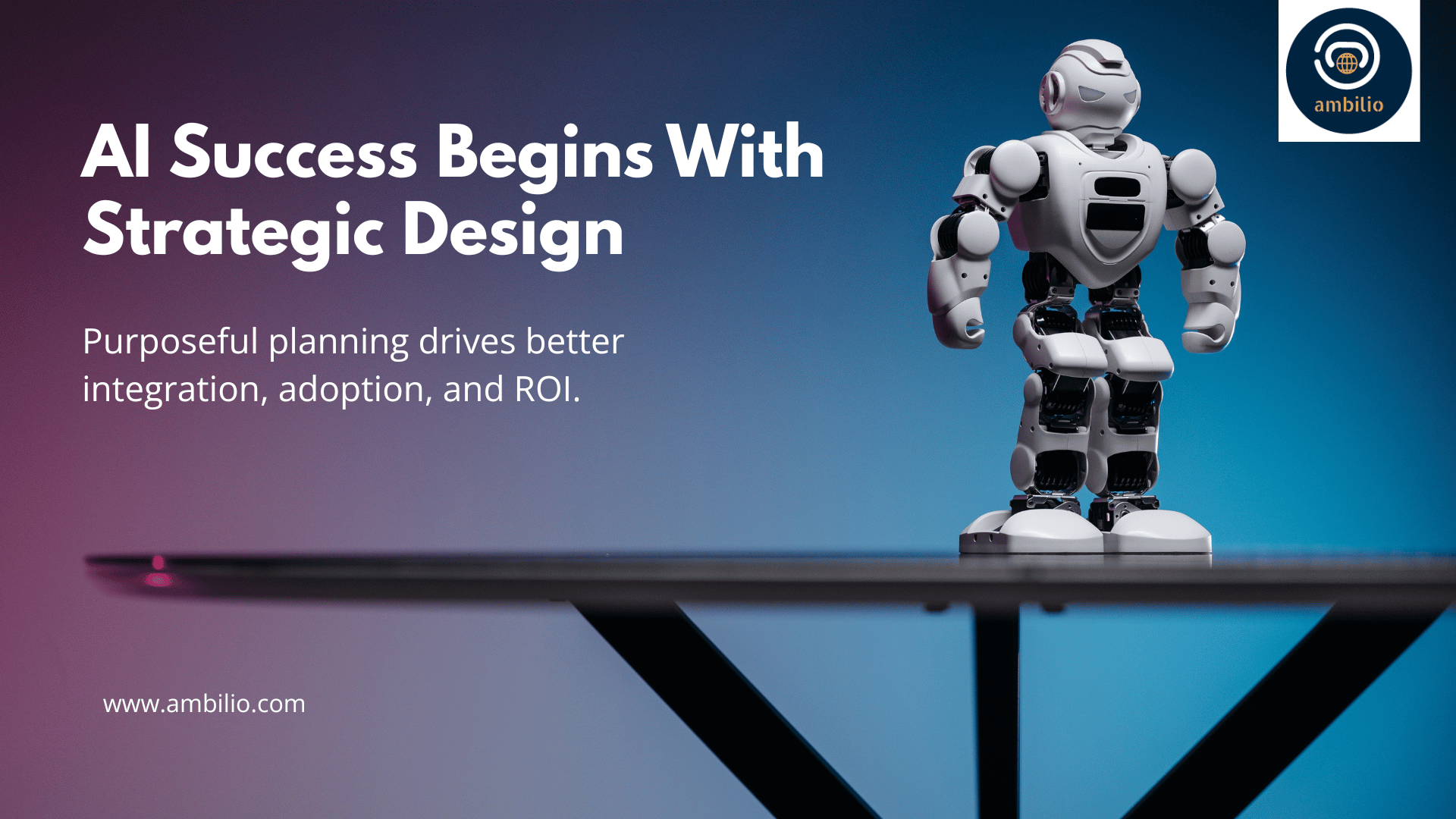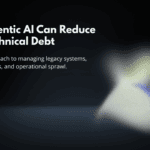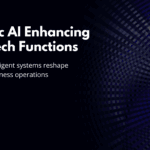In the rush to adopt emerging technologies like artificial intelligence, automation, and data analytics, many enterprises mistake activity for progress. New tools are implemented, dashboards are built, and APIs are purchased—but too often, these efforts lack a clear strategic foundation. The result is a growing disconnect between technological investment and business value. This article examines why technology without strategy becomes a liability rather than a lever for growth. It outlines common pitfalls of tech-first thinking, highlights the importance of strategy-led innovation, and offers a systemic view of AI integration. It also introduces how Ambilio helps enterprises align technology decisions with real-world impact through strategic planning, capability-building, and execution support.
The Illusion of Progress
In today’s fast-paced digital economy, adopting new technologies is often seen as a sign of innovation. Enterprises proudly announce their investment in AI, automation, analytics, or cloud solutions. But beneath this surface-level activity lies a sobering reality—most of these initiatives fail to create meaningful impact. Technology, in itself, doesn’t solve problems. It’s not the shiny dashboard, the latest large language model, or the automated pipeline that creates business value. It’s the strategic alignment of these technologies with business objectives that makes a real difference.
When organizations rush into digital adoption without a guiding strategy, they risk creating more problems than they solve. They end up with expensive tools, fragmented systems, and disconnected teams. Progress becomes an illusion—what looks like innovation is often inefficiency in disguise. In this context, technology without a strategy becomes not just ineffective, but a liability.
Misplaced Investments: When Tools Outpace Thinking
Across industries, we see similar patterns repeating. Enterprises invest in the latest tools and platforms without first understanding their purpose or planning how they’ll be used. Some of the most common examples include:
- Subscribing to an LLM API without a defined use case. The capability is there, but the value isn’t. Teams spend time experimenting without any direction, leading to frustration and waste.
- Deploying business dashboards that no one uses. These dashboards might look impressive, but if the decision-makers don’t trust the data or find it actionable, the tool becomes shelfware.
- Training predictive models that never make it into production. These models remain in sandbox environments, disconnected from actual business workflows.
Each of these actions may stem from good intentions, but in the absence of strategic planning, they become sources of confusion, technical debt, and unnecessary cost. Over time, these misaligned investments accumulate, creating organizational fatigue around tech adoption. Leaders begin to doubt the ROI of innovation, and teams become skeptical of new initiatives. The excitement of trying new technology gives way to cynicism and stagnation.
Tech-First vs Strategy-First: A False Tradeoff
Some organizations frame their choices as a tradeoff between being fast and being thoughtful—between being tech-first and strategy-first. But that’s a false dichotomy. The most successful enterprises are not those that pick one over the other, but those that combine both in the right order.
Strategy-led innovation doesn’t slow down progress—it accelerates it by making it meaningful. It gives direction to experimentation and clarity to execution. Organizations that lead with strategy tend to:
- Clearly define business priorities, such as reducing customer churn, optimizing supply chain costs, or improving employee productivity.
- Identify capability gaps, both technical and human, that need to be addressed.
- Choose the right technologies based on purpose, not popularity.
- Pilot solutions with real users, refine based on feedback, and then scale what works.
When innovation is anchored in a well-defined strategy, it is not only more effective but also more sustainable.
Strategic AI Requires Systemic Thinking
Artificial Intelligence is particularly prone to misuse when adopted without strategy. Unlike basic automation tools, AI changes the way decisions are made, how teams work, and how systems interact. It is not a plug-and-play solution—it is a transformation tool that must be thoughtfully embedded into the fabric of the organization.
To do this well, enterprises must:
- Assess their readiness—culturally, technically, and operationally—for adopting AI.
- Establish feedback loops between users, data, and AI systems. The most valuable insights often come from iterative refinement, not one-time deployment.
- Ensure AI is deeply integrated into workflows, not used in isolation. A chatbot that doesn’t connect to backend systems or a recommendation engine that doesn’t tie to inventory data adds little value.
AI success isn’t measured by how many models you train or how fast you deploy—it’s about how well the AI solutions drive business outcomes. That can only happen when there is systemic thinking behind implementation.
Ambilio’s Value Proposition
At Ambilio, we understand that true transformation lies at the intersection of strategy, technology, and execution. Our role is not just to suggest the latest tools. We partner with organizations to co-create strategic roadmaps, redesign processes, and build internal capability.
We start with AI-readiness audits to assess where the organization stands—technically, culturally, and operationally. This isn’t just a checklist; it’s a foundation for designing a realistic and impactful AI journey.
Next, we move into strategic use-case design. Rather than taking a one-size-fits-all approach, we work with business teams to identify areas where AI can solve real problems or unlock opportunities. These are not theoretical exercises—they are grounded in operational context.
We use simulation-led experimentation to test ideas quickly and safely. Instead of building full-scale solutions from day one, we pilot in controlled environments, learn from the results, and refine accordingly.
Most importantly, we embed capability-building into every step of the journey. It’s not enough to bring in a solution—the organization must be equipped to run it, improve it, and evolve it over time. This is how transformation becomes sustainable.
From Shiny Tech to Sustained Advantage
Technology delivers value only when it’s tied to real outcomes. Whether it’s enhancing customer experience, reducing operational costs, or launching new business models, every investment in AI or analytics must be measured by its impact—not its novelty.
Ambilio helps organizations move beyond the hype. We ensure that technology becomes a strategic advantage, not a drain on resources. Our approach is grounded in aligning every tech decision with business goals, operational capabilities, and cultural context.
The result is not just functional systems—it’s resilient capabilities that drive ongoing improvement and innovation.
Closing Thought
In an age where technologies evolve faster than business models, the absence of strategy is not just inefficient—it’s dangerous. A poorly implemented AI project can damage customer trust, waste capital, and demoralize teams. That’s why organizations need a partner who can bridge the gap between ambition and action.
At Ambilio, we translate strategic intent into architecture, and architecture into execution. Because in the end, technology without strategy is not progress—it’s a risk. And we are here to help you navigate it wisely.



